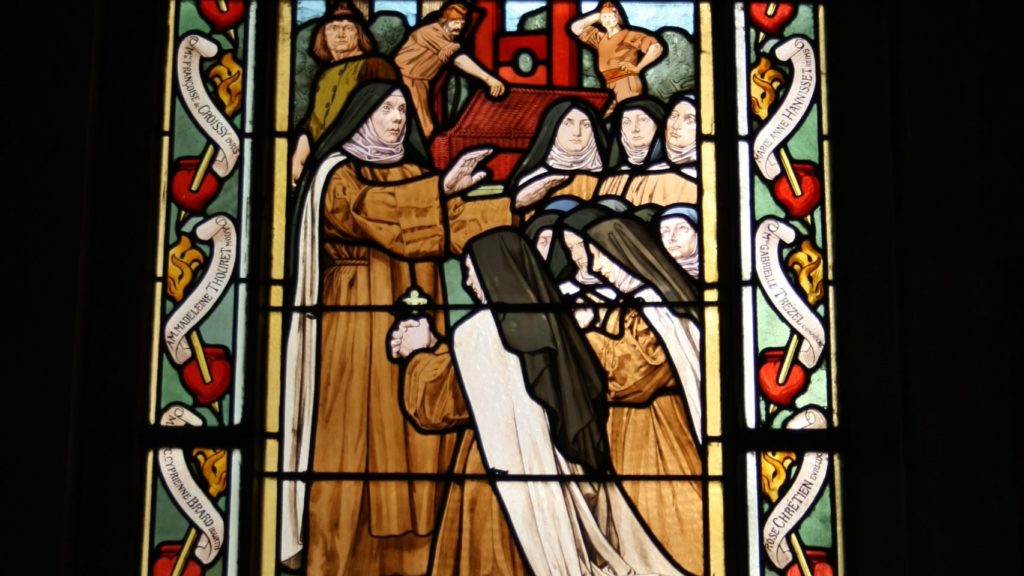Pope Francis on Wednesday decided to make the Martyrs of Compiègne officially saints. It was a rare decision, in that no one in the Church disagreed with it.
In order to understand why the decision met with basically universal applause, it’s important to know the story of the sixteen Carmelite sisters guillotined in Paris on 17 July 1794 during the blood-soaked and chaotic phase of the French Revolution known as the Reign of Terror.
Ten days after the execution of the martyrs, the principal motor of the Terror, Maximilien Robespierre, went to the guillotine himself, ending the Terror.
At least 35,000 people perished in the Reign of Terror, usually in front of cheering crowds.
The religious sisters were convicted of hostility to the French Revolution, sympathies to the monarchy, and for continuing in consecrated life, which had been made illegal by the revolutionary government.
The Carmelites were singing as they climbed the scaffold to their death. The people watching were unusually silent. Many historians think the execution of the religious sisters shocked – and maybe shamed – the people of the French capital, and so contributed to the end of the Terror soon after.
Pope St. Pius X beatified the religious sisters in 1906, but they haven’t got the recognition of a miracle required for canonization according to the usual process.
However, this hasn’t prevented them from being featured in many artistic renderings in France, including novels and plays.
The opera Dialogues des Carmélites was first performed in Italy in 1957, and that year was performed in Italian, French, and English.
A film of the same title came out in 1960. A version was made for French television in 1984, and the scene of the execution of the martyrs is widely featured on social media.
The story is not widely known outside of France, but those who find it are greatly moved. The women’s “crime” was trying to live the promises of their faith.
Their joyful singing as they accepted their fate moves people to this day, the same way it moved the crowds at their execution.
The French Revolution opposed the Church, and those crowds were not faithful Catholics – they were people who supported closing chapels and ending the teachings of the Church. Yet they were struck by what happened to these women.
In many ways, it resembles the reactions of the Romans when Saint Lawrence was burned alive in 258. More churches in Rome’s historic city center are named after Lawence than anyone else but the Blessed Virgin Mary. There are more churches for Lawrence than there are for Saints Peter and Paul.
One Vatican official, when asked why it is so, told me, “His death was like if today, India put Mother Teresa on a gridiron and aired it on TV!” That was in the early 2000s.
Lawrence was widely known – even by Roman pagans – for his charity toward the poor and downtrodden. Lawrence had the respect of Rome’s pagan citizens and his execution shocked and shamed the city’s people.
Lawrence died, however, for a new religion superseding an old one. The Martyrs of Compiègne died for their older faith, one that appeared perhaps to be ceding its place to a new one.
In many ways, the story of the Martyrs of Compiègne is a good reflection on how to view Synodality and the role it plays in modern society that seems to be moving away from Christianity, especially in the West.
“Discernment always unfolds within a particular context, the complexities and specificities of which must be grasped as completely as possible,” says the final document of this year’s Synod on Synodality.
“For discernment to be truly ‘ecclesial’,” the document continues, “it should make use of the appropriate means. These include an adequate biblical exegesis to help interpret and understand biblical texts while avoiding partial or fundamentalist interpretations; a knowledge of the Fathers of the Church, of Tradition and the teachings of the Magisterium, according to their varying degrees of authority; the contributions of the various theological disciplines; and the contributions of the human, historical, social and administrative sciences. Without these latter, it is not possible to grasp the context in which and with a view to which discernment takes place.”
The Carmelite sisters themselves were trying to work with the “contributions of the human, historical, social and administrative sciences” coming out of the French Revolution. They had given up their convent and moved into separate houses. In their obedience to the new Revolutionary government, they had lost their traditional income. They still tried to live their Faith under these new rules, and were still punished by the State.
One of the main themes of Synodality has been emphasizing that “synod” comes from a root meaning “walking together.”
The Martyrs of Compiègne remind us that sometimes, we are required to walk together up the scaffold.

